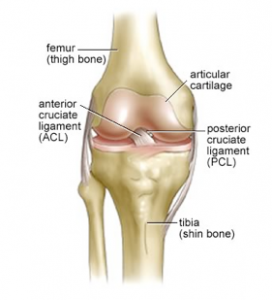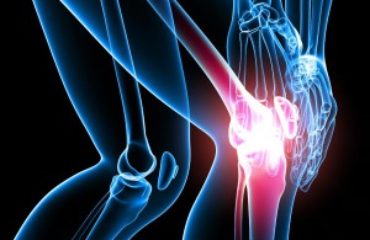What is the ACL?
The ACL is called the anterior cruciate ligament and it is one of four ligaments responsible for providing stabilization in the knee.
What is the most common injury for the ACL? 
The most common injury is a torn ACL.
What is a torn ACL?
When the ACL goes through the front of your knee and passes through the middle of it, the thighbone can slip backward which can cause the tear. If you do not have a normal, intact ACL your knee would become incredibly unstable and would be prone to buckling when it is planted firmly on the ground or when you try and stop quickly.
How does this happen?
This happens when there is a sudden change in the direction that your knee is facing, with your knee already in a locked position. This can also take place if a pivot takes place when your knee is locked.
Most of the injuries take place during a fitness activitiy or sport. The ligament becomes stretched or it tears when you keep your foot planted and your knee locked, but then it twists and pivots at the same time, something that often takes place in football, basketball, soccer, and gymnastics. This sudden change will stress and damage your ligament. The injuries usually occur at lower speeds during non-contact.
What are the most common symptoms?
The most common symptoms are a large pop followed by immediate pain. Your knee will swell instantly as well.
Who is at the most risk for ACL tears?
 Women are actually at the highest risk for ACL tears because of the differences between male and female anatomy and muscle function.
Women are actually at the highest risk for ACL tears because of the differences between male and female anatomy and muscle function.
Women have wider pelvises compared to men, and the wider pelvis actually causes your femur to meet your tibia at angles greater than those men experience. This can increase the force that your ACL needs to withstand when you twist, which can increase the risk of damaging the ACL.
Genetic differences can also put woman at a higher risk for an ACL tear compared to men. The muscles in females are often more elastic and they decrease the protection that the hamstring is given to provide more to the ACL. Hormonal changes that take place with menstruation can cause more elasticity which can increase the risk of tears.
Finally, female hamstrings actually contract at a rate of one millisecond slower compared to males which increases the risk of damage to the ACL when women land from a jump.
What are the treatment goals if you have a torn ACL?
The treatment goals are to get you back to your original level of function. In the most cases arthroscopic surgery might be a requirement in order to reconstruct your torn ligament.
How long can it take to recover?
It can take anywhere between six and nine months to get back to normal activity levels after you have torn an ACL and undergo a reconstruction.
References:
http://orthoinfo.aaos.org/topic.cfm?topic=a00549
http://www.nlm.nih.gov/medlineplus/ency/article/001074.htm


